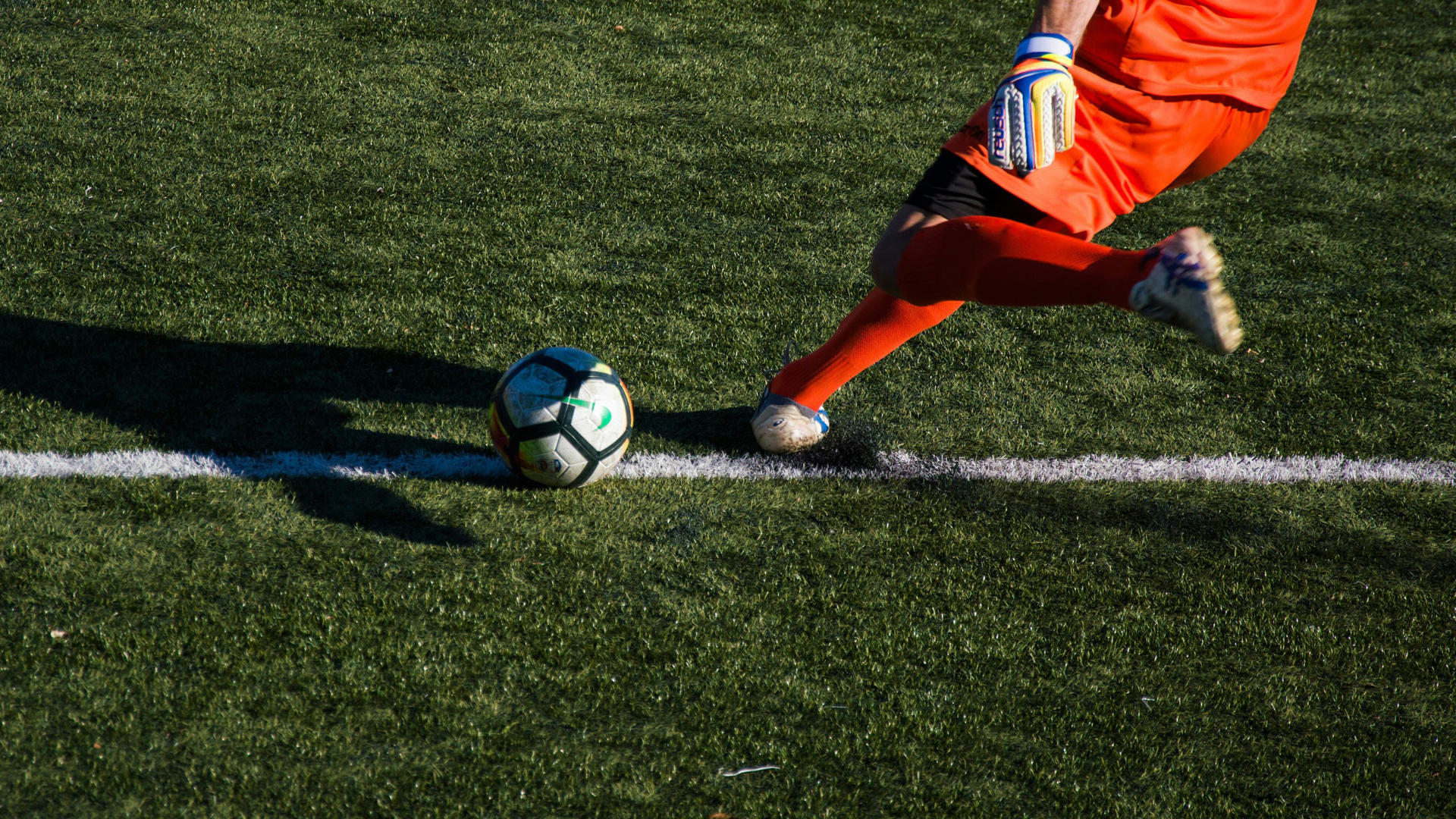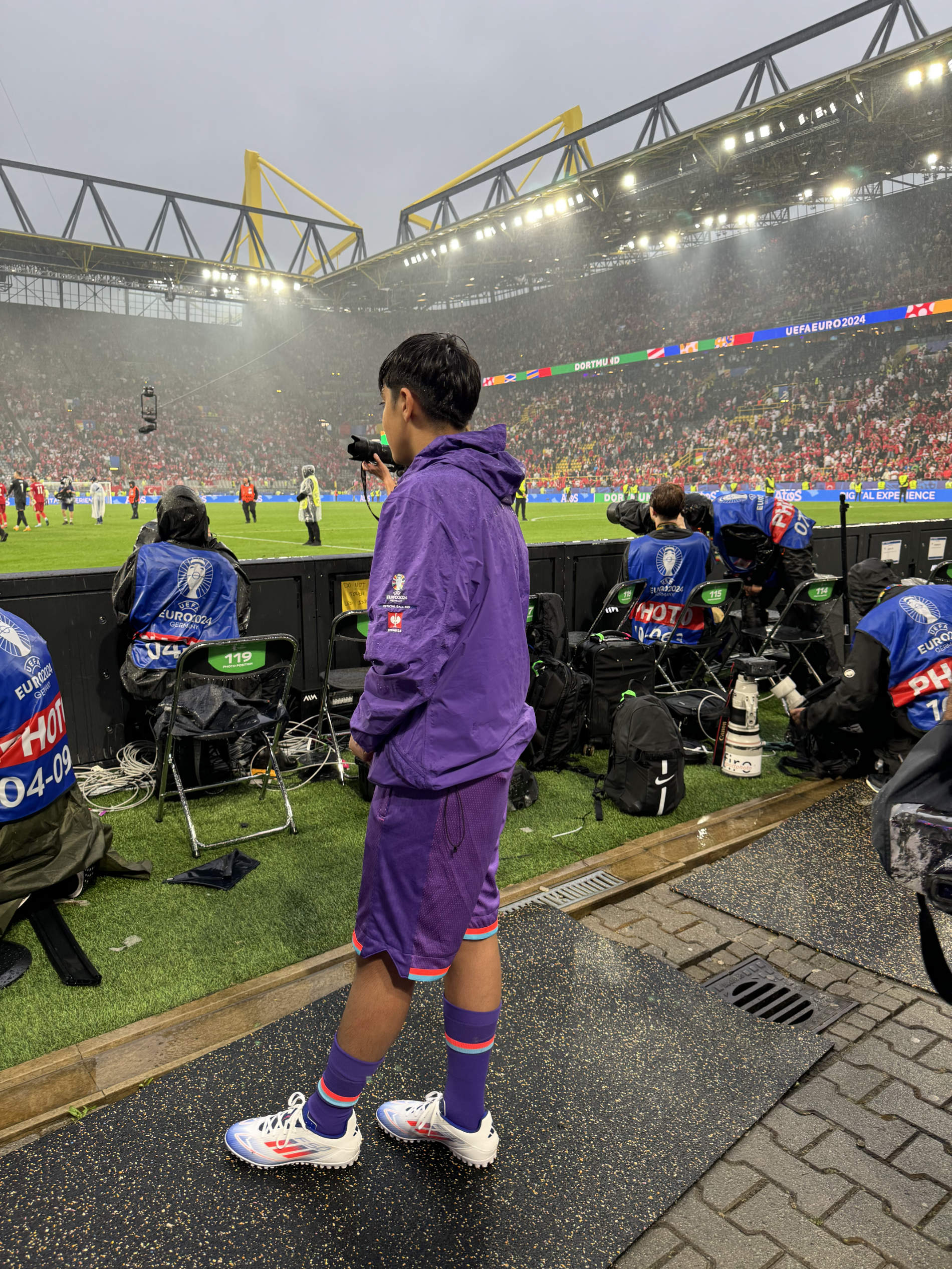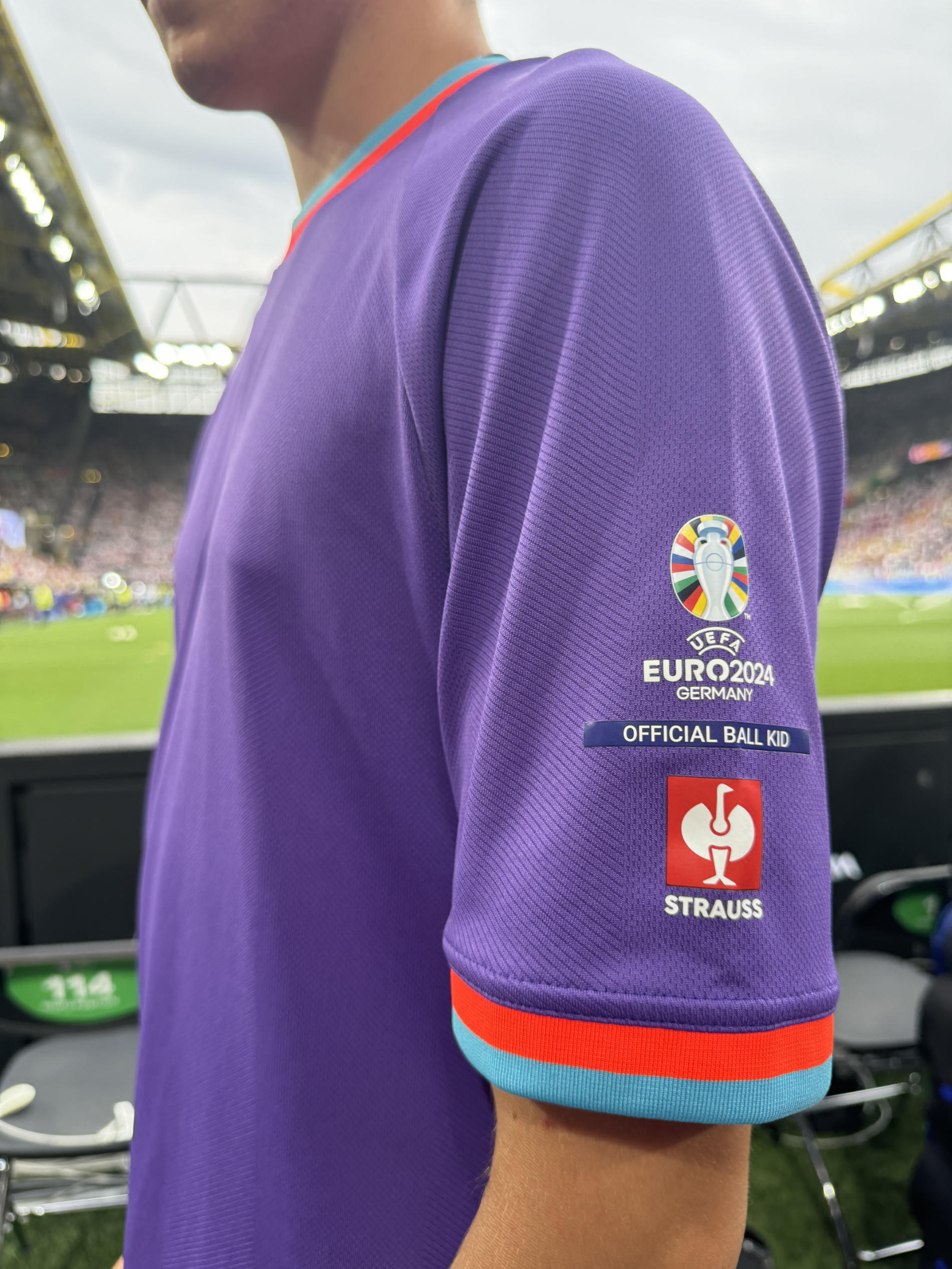Jerseys, shorts, boots – if textiles were excluded from the stadiums of the European soccer championships, time would immediately be called on the UEFA Euro 2024. Yet alongside their obvious use for the players’ kit, there are many other areas in the stadium where textiles are in evidence. A call to textile expert Kai Nebel from the Texoversum at Reutlingen University: “Textiles serve many purposes at every European Championship and are particularly prized for their wide variety of specific applications,” says Nebel. So fire away, Mr Nebel: “The notably visible flags of the linesmen are made of textiles, as are the corner flags, the goal net and the ball stop netting, the headbands and handtowels, the sports bags and the drinks and equipment bags. When players get hurt, textiles are the first responders in the form of bandages, tapes, strappings and plasters. They are also to be found in the goalkeeper’s gloves, in the seating for the trainers on the sidelines and they often float high above the heads of the cheering crowds in the stadium roof, whilst geotextiles do their job of stabilising the turf.” Textiles can also be found inside footballs, as the German sporting goods manufacturer Derbystar confirms.
Textiles in the centrepiece of the game
Although they did not produce the official footballs for the current European championships, the company, which has been manufacturing footballs since 1963, is the official supplier of balls for the German Bundesliga. In its footballs, Derbystar uses textile fibres for the linings, involving between 20 and 25 different mixes of polyester, cotton and viscose. The combined layers lend firmness and rigidity, at the same time as ensuring a good bounce. Particularly impressive is the fact that every Derbystar football for the Bundesliga is hand-sewn. The individual panels are sewn together with 630 double stitches and 60 corner stitches. Specially trained seamsters and seamstresses take up to three hours to construct each finished ball from its components – the bladder, 18 metres of thread, 20 hexagons and 12 pentagons. The stitching is then tied off in a double knot.
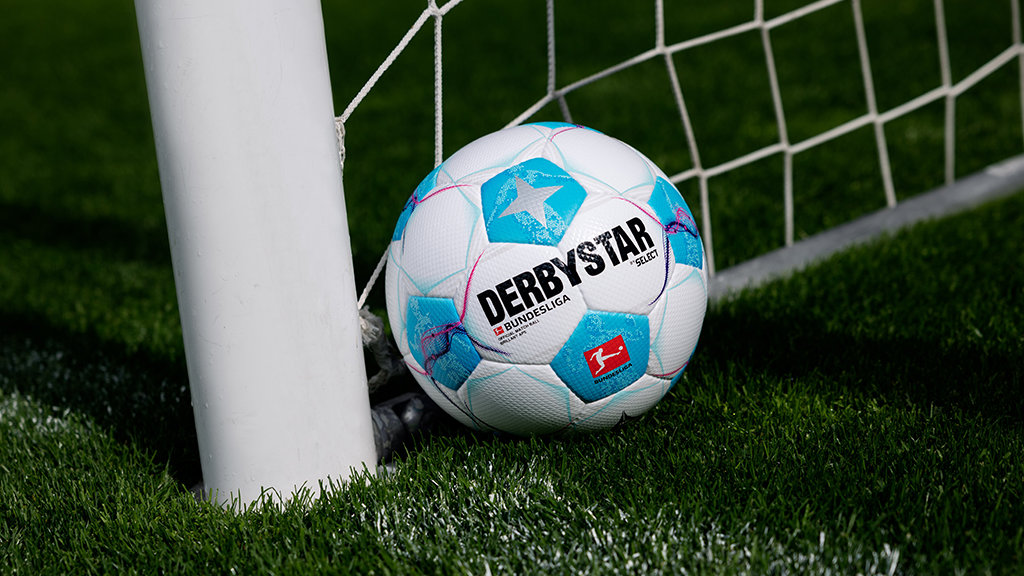
Goal nets made from PLA in use in the Adidas Arena at the Berlin Reichstag
Another important element in every football game, however, manages to exist entirely without knots: the nets. They are usually made of knitted man-made fibres such as polyethylene or polypropylene. The advantage of knitted goal nets is that they are robust, keep their shape but remain elastic. And, finally, they need not only to be weather-resistant but also to withstand the impact of a ball that has been kicked hard into them.
Fun Fact
Top players can kick the ball at speeds of up to 112 mph (180 km/h) and more. The fastest kick ever recorded came from the Brazilian footballer Ronny Heberson, who, in 2007, took a free kick which flew into the net at an amazing 131 mph (210.9 km/h).
Manfred Huck is a company that knows all there is to know about goal nets. The company has, amongst other things, been manufacturing sports and protective netting since 1963, including netting for the soccer pitch. “Our nets are regularly used in European and World championships, as well as in professional football leagues,” says CEO Stefan Huck. “And we have supplied nets for these European championships too.” Because sustainability is becoming more and more important, including on the football field, Huck have, for some time now, also been making goal nets out of bio-degradable materials such as PLA (Poly Lactic Acid). PLA is industrially compostable as it’s made from renewable raw materials such as sugar cane, maize and potatoes. Whilst Huck’s PLA goal nets are not yet being used in the stadiums of the UEFA Euro 2024 – they are in use on the peripheries. Sports equipment manufacturers Artec have covered the goals of the mini football pitch in the Adidas Fan Zone in front of the Reichstag in Berlin with eco-friendly Huck netting. “They look exactly like the traditional goal nets that are currently being used in the UEFA Euro 2024 stadiums,” says Artec CEO Dirk Beinkämpen.
“As soon as UEFA comes a-knocking, we’ll get planning”.
Since the EU ban on microplastics, if not before, many football clubs, together with municipal and local authorities responsible for football pitches, have faced the problem of how to continue to make available pitches with artificial turf for new young players, including the professional footballers of tomorrow. One possible answer comes from the textile industry. TFI – the Textile and Flooring Institute at RWTH Aachen University and the Institut für Textiltechnik (ITA) of RWTH, in cooperation with industrial concern, Morton Extrusionstechnik, have just developed an organically-based artificial turf which does without microplastics entirely. The completely recyclable grass called “BioTurf” is produced from rapeseed and farming waste, and, according to the institutes, is a “world first”. The “sports turf of the future” has been “trained” in a small indoor “soccer box” for almost half a year and is now publicly available for its professional debut: “Preparations are underway for installing the turf in mainstream football pitches,” says Post. And when will the first Euro Final be played on the new textile turf? Nicole Espey, who is responsible for the BioTurf at the ITA responds to this question - only half in jest: “As soon as UEFA comes a-knocking, we’ll get plans underway.”
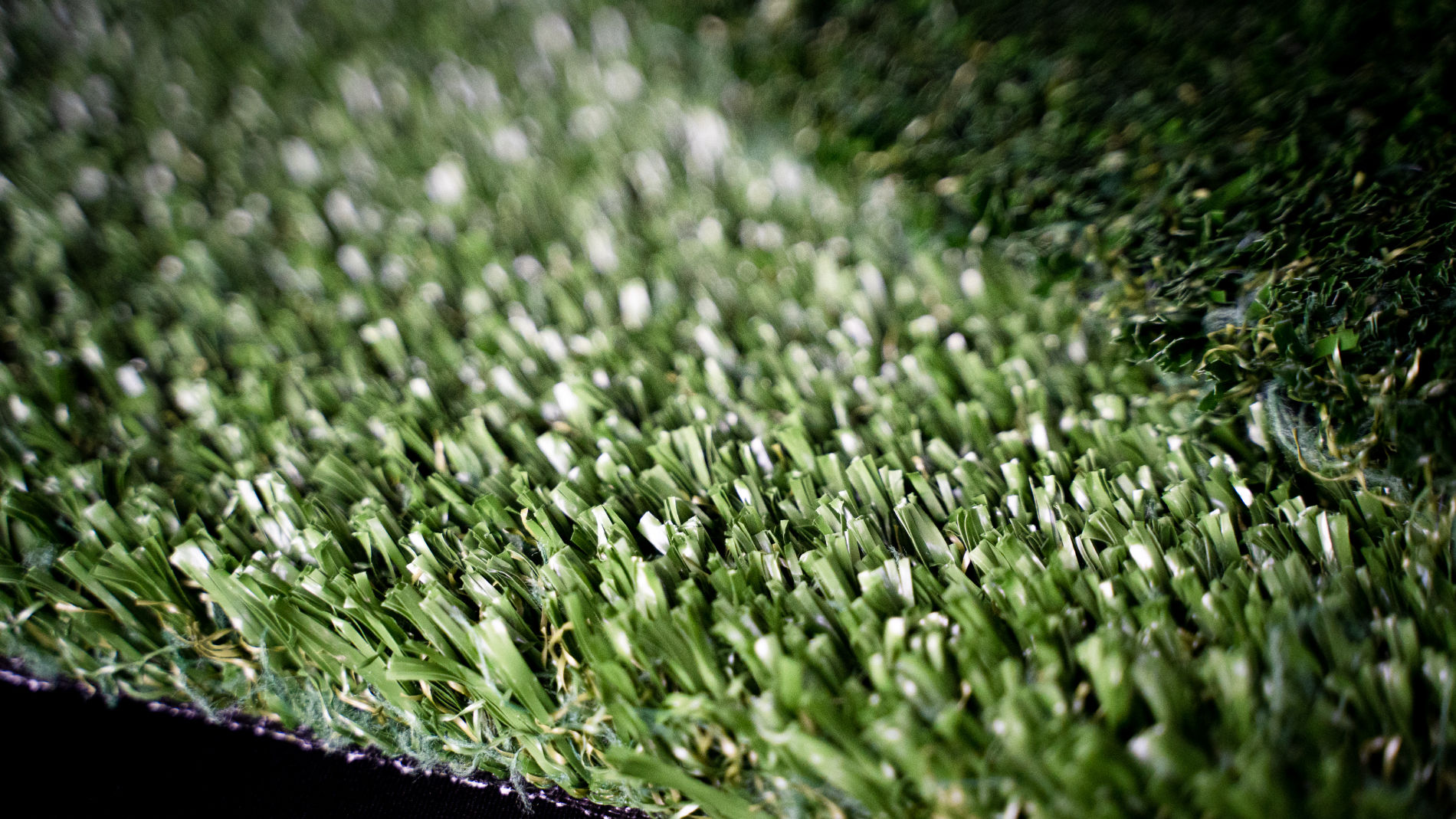
Heroes behind the scenes at the European Championships and eye-catching ball kids
Countless helpers, be it greenkeepers, bus drivers or cleaning staff, work hard behind the scenes of the European Championships to ensure that the event makes a splash on the global stage without a hitch. Engelbert Strauss, a family business and one of the world’s leading manufacturers of work clothing and footwear, are, for the first time, official partners of the championships this year. “As the official workwear partners of UEFA EURO 2024, we have provided support to the people in all areas of work who make the mega-event possible,” confirms Strauss. Particularly striking at Euro 2024 are the ball kids in their purple jerseys. The 612 girls and boys aged between 14 and 18 will be standing on the sidelines in all 51 championship matches to throw any balls that leave the pitch back to the players. Their jerseys also come from Strauss. The fact that they are so striking is deliberate. Strauss explains: “It is important that the outfits of the ball kids on the sidelines are immediately recognisable to the players on the pitch. So, as well as the striking purple colour of the jerseys, the sleeves are printed with colours borrowed from hi-vis PPE.”
Deliberately striking; so that players can easily recognise them, the ball kids wear purple jerseys from Strauss, with colours borrowed from hi-vis PPE printed on the sleeves as well. Source: Strauss
